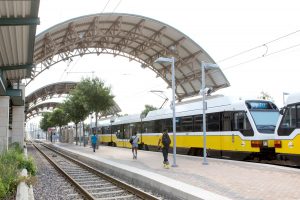 Dallas City Council approved a resolution supporting the DART D2 Subway project, the second light rail line crossing Dallas downtown from Victory Park to Deep Ellum.
Dallas City Council approved a resolution supporting the DART D2 Subway project, the second light rail line crossing Dallas downtown from Victory Park to Deep Ellum.
The resolution includes a commitment to continue to work towards addressing community concerns on the east end of the alignment.
“The DART D2 Subway project is an important regional project” and a “long-term investment in mass transit to support both the city’s and the region’s goals of a more walkable, transit–oriented and sustainable region,” Paul Wageman, the chairman of the DART Board of Directors said.
DART began planning for the D2 Subway project in 2007 and the 30 per cent level of preliminary design was completed in October of 2020. DART will continue to work with the Federal Transit Administration (FTA) to request re-entry into the Capital Investment Grant programme engineering phase as a core capacity project. The first step in this process will be for the FTA to issue the Final Environmental Impact Statement/Record of Decision along with the 30 per cent design package. Public, agency and stakeholder involvement will continue to be integral to the process.
The DART Board approved the FY21 20-Year financial plan in September 2020 under which the D2 Subway remains in the plan assuming an approximate 50% federal grant. USD 1.7 billion is the estimated cost of the project comprising the construction of a 3.2 km line from Victory Station to Good Latimer in Deep Ellum and three stations (Metro Center, Commerce, CBD East). The line is expected to enter operation in 2028.
Within the next months, the collaboration will continue between DART, the City of Dallas, the North Central Texas Council of Governments and TxDOT to evaluate any proposed refinements, enhancements, and modifications to the east end of the corridor.
The Dallas-Fort Worth-Arlington Metropolitan Area (known as DFW metroplex) continues to experience unprecedented growth, with new businesses and residents moving to the area every day. The primary purpose of the D2 Subway project is to add long-term passenger carrying capacity to the DART light rail system and to provide operational flexibility and added reliability, especially important for the thousands of riders that use the DART system every day.
Share on:



